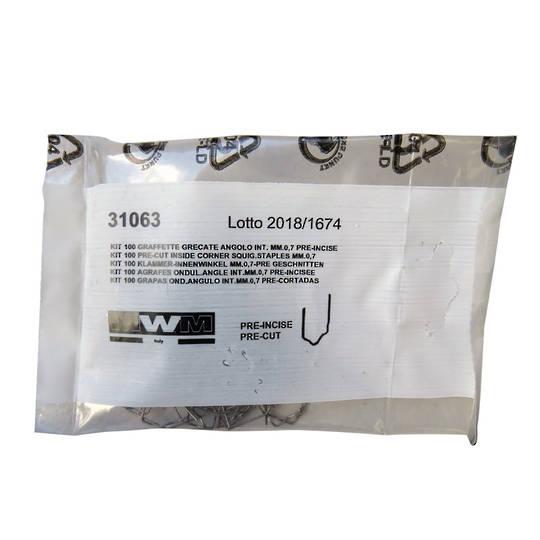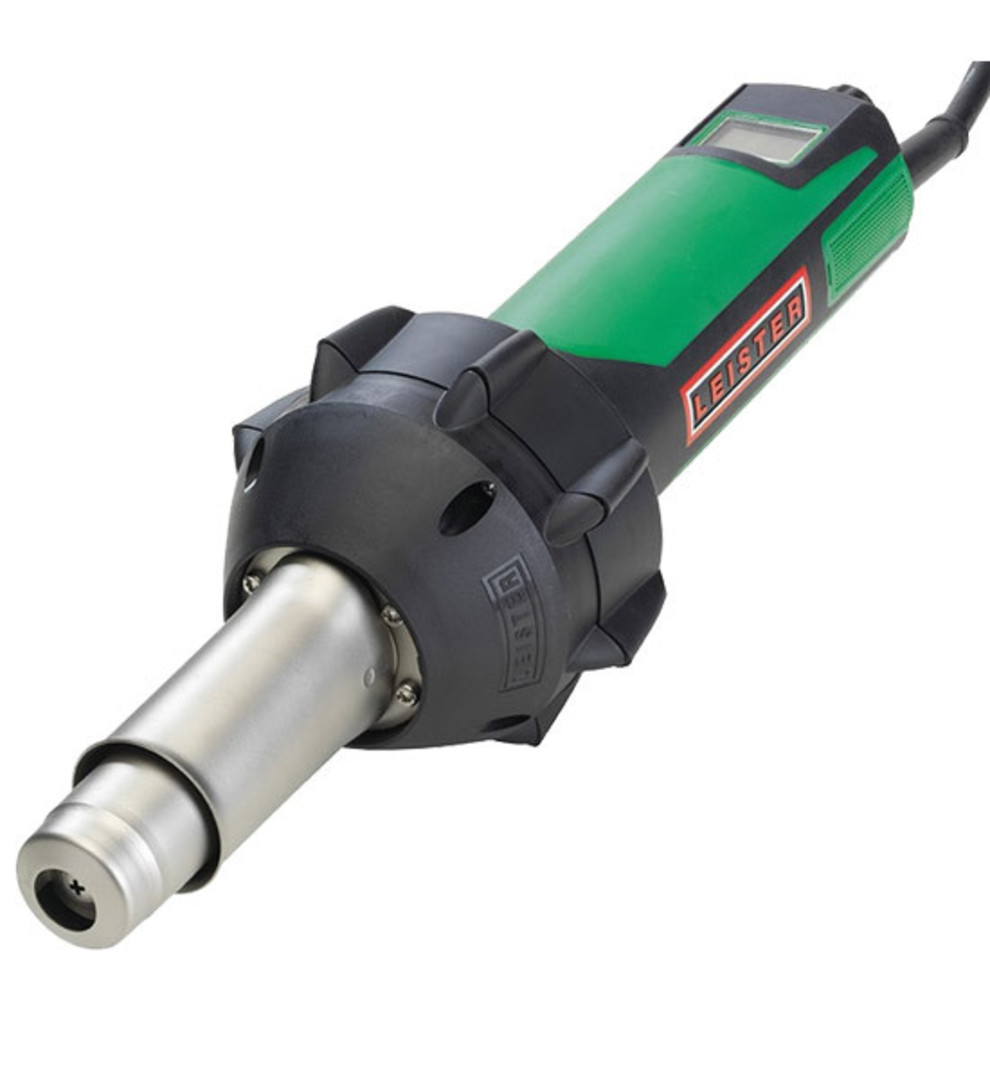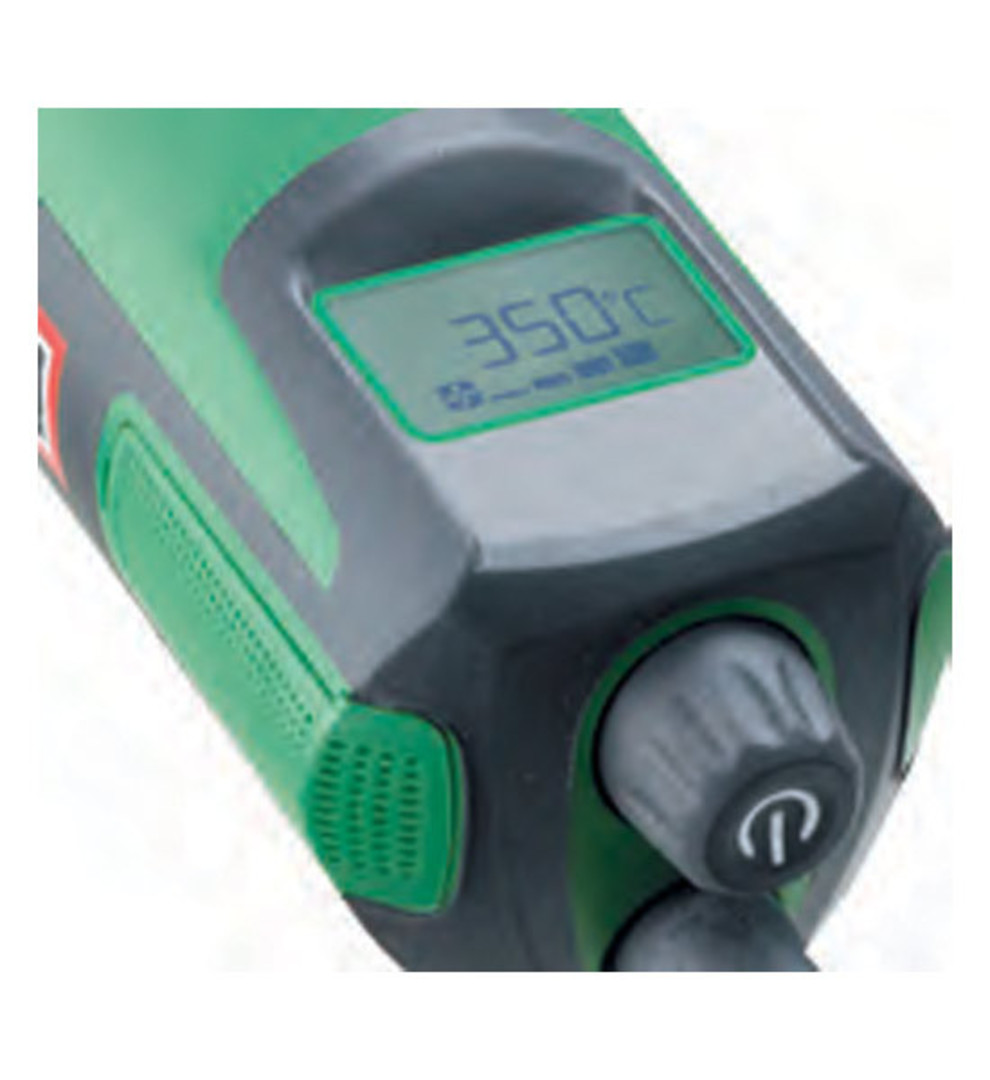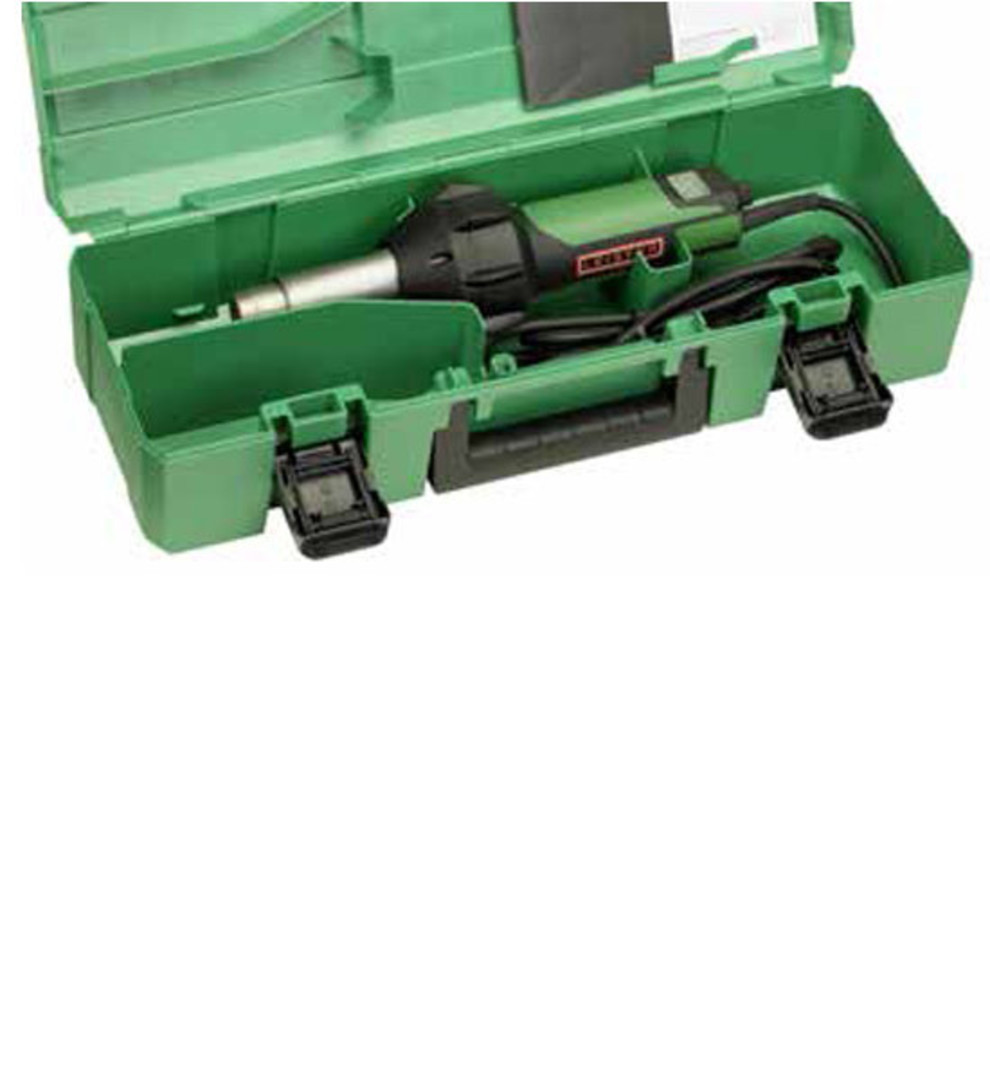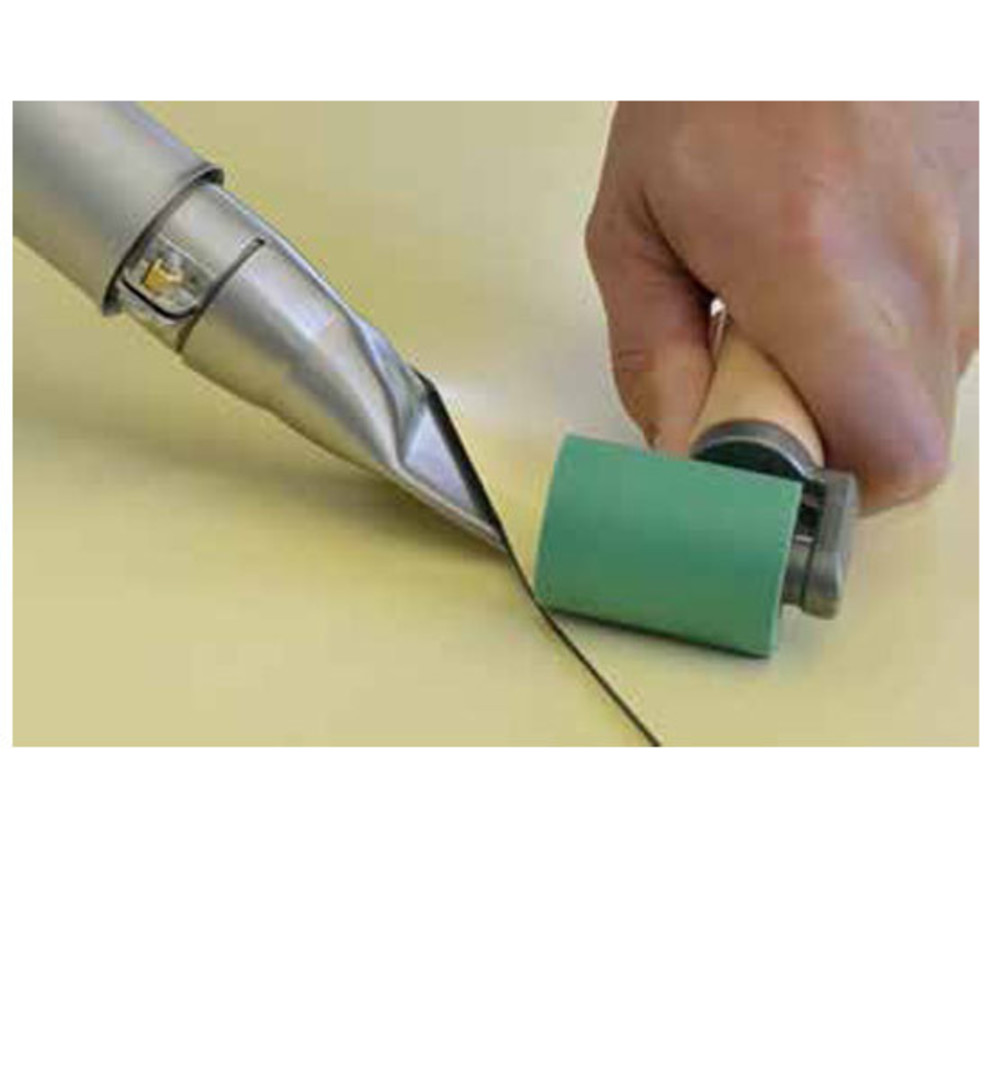- Track your orders
- Save your details for express checkout
TRIACSTARTKIT
Leister TRIAC AT Digital Hot Air Plastic Welding Starter Kit
Plastic welding made easy. Also suitable for heat applications. 100% Swiss made quality.
Plastic Welding & Heat Tools, Heat Tools, Heat Tools and Plastic Welding, Plastic Welding & Heat Tools, Heat Tools
The TRIAC AT is a new generation tool in the revolutionary TRAIC hot air tool range from Leister. The new TRIAC AT is an intelligent yet robust hot air tool for welding and shrinking plastic. It allows you to control your temperature and airflow separately. These two parameters are critical for many plastic welding applications. Temperature settings and airflow settings are easily viewed and adjusted using the new e-drive digital display. The Triac AT incorporates a temperature probe that guarantees a precise temperature. Dual air filters are easily removed for cleaning. The Triac AT features a protective heater tube for user safety.
It is designed for the needs of even the most demanding professional. The TRIAC AT incorporates an ergonomic design, secure handling and a modern look. Decades of experience and Swiss thoroughness is packed into the modern design. Every tool undergoes stringent quality checks prior to leaving the factory in Switzerland. The new TRIAC AT once again proves the renowned reliability of all Leister tools.
100% Swiss made quality.
Weighing less than 1Kg the TRIAC AT is a real lightweight.
Complete kit includes:
It is designed for the needs of even the most demanding professional. The TRIAC AT incorporates an ergonomic design, secure handling and a modern look. Decades of experience and Swiss thoroughness is packed into the modern design. Every tool undergoes stringent quality checks prior to leaving the factory in Switzerland. The new TRIAC AT once again proves the renowned reliability of all Leister tools.
100% Swiss made quality.
Weighing less than 1Kg the TRIAC AT is a real lightweight.
Applications:
|
Complete kit includes:
- TRIAC AT Hot Air Plastic Welding Hand Tool
- 5mm Speed Weld Push-fit Nozzle
- Tacking Nozzle
- Tubular Push Fit Nozzle 32mm
- Sturdy Tool Box
| Voltage | 230V |
| Power Consumption | 1600 W |
| Temperature | 40 - 620°C |
| Air Flow | (20°C max) l/min 120-240 |
| Weight Kg | <1 without cord |
| Digital Display | √ |
| Adjustable Air Volume | √ |
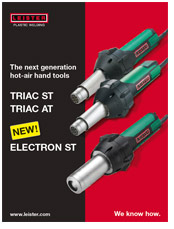 Product Brochure (1MB) | 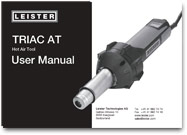 Manual (2MB) |
How To Weld Rigid Plastics:
Which materials can be welded?
Only Thermoplastics can be welded. You must weld like for like plastic to achieve a structurally sound bond.
- Prepare the weld surface. Ensure it is clean of dust and dirt so that you can achieve an unobstructed plastic-to-plastic bond. Notch out a “V” groove along the crack or join.
- “Tacking” the join or crack together helps to secure the material in place to ensure there is stability and no misalignment of the joins. Run the tip of a tacking nozzle or heated metal item along the join to create an initial bond.
- Using a speed welding nozzle or by free hand pendulum welding technique, introduce the plastic weld rod to the weld zone. Ensure equal levels of hot air are directed at the plastic weld rod and the weld surface to ensure they reach “plasticity” at the same time.
- When the surface plastic shows signs of slight wetting, move the welding nozzle along the groove while at the same time applying downward pressure on the weld rod to ensure a sound bond.
Questions?
Thank you for your interest.
Please enter your details and the document will be emailed to you immediately.
You might also be interested in ...
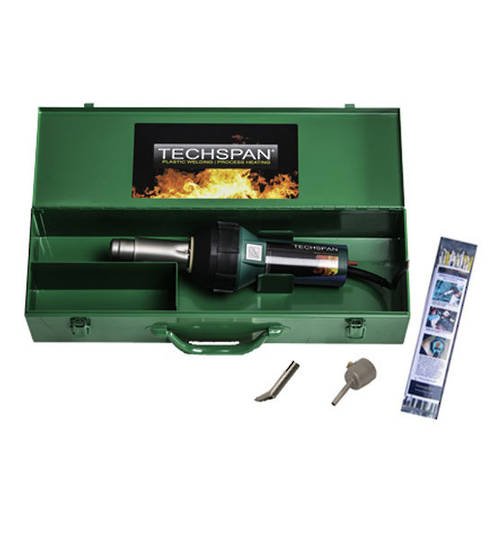
Techspan Rion Analogue Standard Automotive Hot Air Plastic Welding Kit
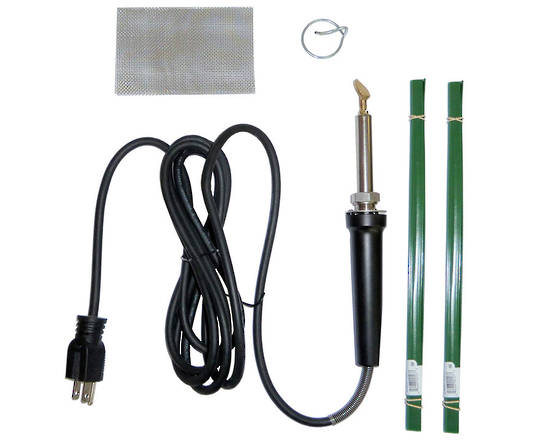
Polyvance Kayak & Canoe Welder Professional
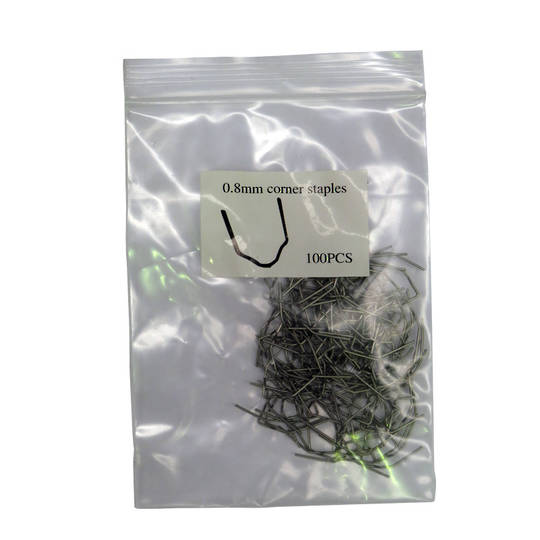
0.8mm Corner Staples Pack of 100
